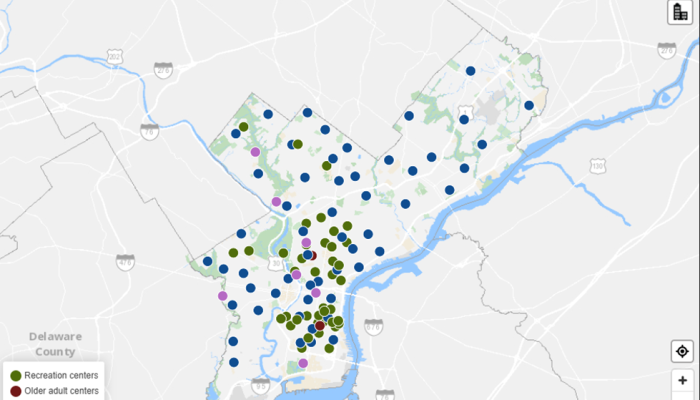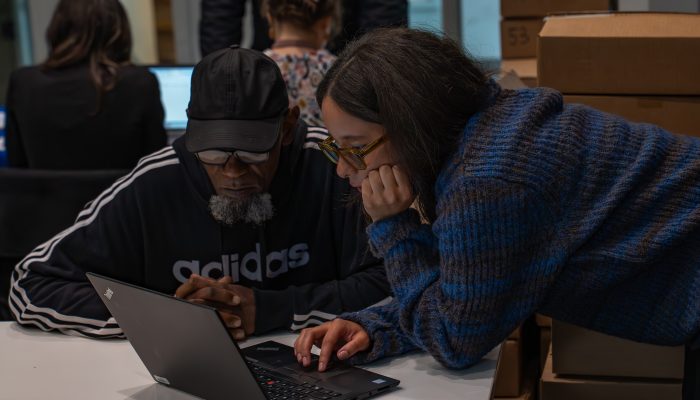During the summer of 2021, the City launched the Philadelphia Household Internet Assessment Survey to better understand the digital access needs of its residents. Previous data–from the 2019 American Community Survey–did not represent the current state of Philadelphia’s internet and device usage.
To inform its digital equity work, the City needed fresh data and worked with Wilco Electronic Systems, Centri Tech, SSRS, and broadband expert Dr. John Horrigan to create and conduct this survey.
So, what does the data say about Philadelphia’s digital needs?
Let’s talk numbers
The report, “Connecting Philadelphia: 2021 Household Internet Assessment Survey,” shows that Philadelphia is making progress.
Here are some key data points:
Technology adoption
- 84% of Philadelphia households have home high-speed internet connections, a marked increase from the 70% reported in the 2019 American Community Survey (ACS).
- 75% of Philadelphia households have a working desktop or laptop computer, compared with 71% in 2019 (according to the ACS).
Impact of connectivity programs
- 9% of Philadelphia households have signed up for a discount internet program, such as Comcast Internet Essentials, T-Mobile’s Project 10Million, the Emergency Broadband Benefit, or PHLConnectED.
- 17% of low-income households have service due to a discount offer.
- 21% of K-12 households have signed up for a discount offer.
Awareness of connectivity programs
- 31% of all Philadelphia respondents have heard of discount or free internet offers from Comcast Internet Essentials, T-Mobile’s Project 10Million, or PHLConnectED.
- 13% of all respondents have heard of the Emergency Broadband Benefit.
- 8% of all respondents have heard of the PHLConnectED program.
Affordability
Non-broadband adopters cited one or more of the following reasons for forgoing service:
- 56% said the cost of monthly access fee was a problem
- 50% said they could not afford the cost of a computer
- 49% said the smartphone allowed them to accomplish all they need online
- 43% said they did not want or need service
- 31% said they were not comfortable using the internet or a computer
When asked to identify the most important reason they do not have high-speed service at home, a plurality (42%) cited affordability (e.g., monthly access fee or computer cost).
K-12 households
- 91% of K-12 households have high-speed internet home subscriptions, up from 70% in 2019 (ACS).
- 85% of K-12 households have a desktop or laptop computer, compared with 76% in 2019.
Groups with the lowest home broadband subscription rates
- Older adults: 67% of those 65 or older subscribe to broadband at home.
- Spanish speakers: 67% of residents who took the survey in Spanish have broadband at home, a much lower rate than for Hispanic residents in the city who opted to take the survey in English (83%).
- Low Income: 71% of households whose annual incomes are $20,000 or less subscribe to broadband.
This is just a glimpse into Philadelphia’s digital equity story. To fully understand the extent of the data, check out the full report.
We’ve got more to do
There’s still work to do. The report also showed:
- A lack of public awareness about available discount programs.
- Affordability and “subscription vulnerability” as key barriers.
- Groups with below average broadband adoption rates follow familiar patterns pertaining to race and ethnicity, income, and age.
Households that are “subscription vulnerable” usually have experienced service interruption during the pandemic, would have difficulty keeping their internet service without a discount, or are low-income. One-third of residents in Philadelphia are considered subscription vulnerable.
All of these points serve as a call to action for city, state, and federal governments. To ensure everyone has the necessary digital access, intergovernmental collaboration is critical.
The City’s digital equity team also hopes this report is useful to others and inspires other cities to conduct the same type of survey.




